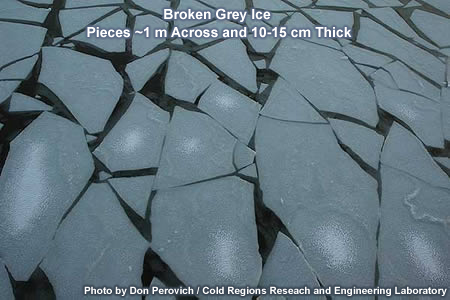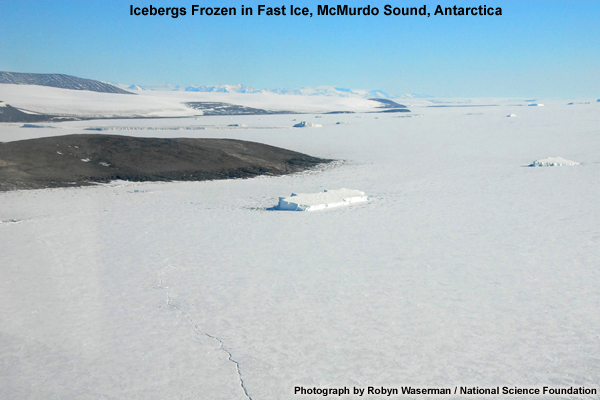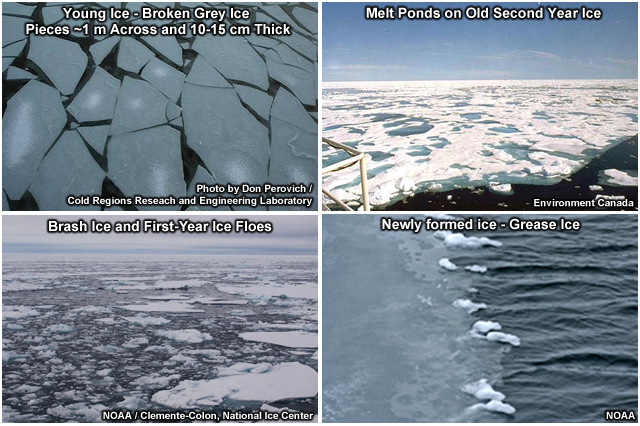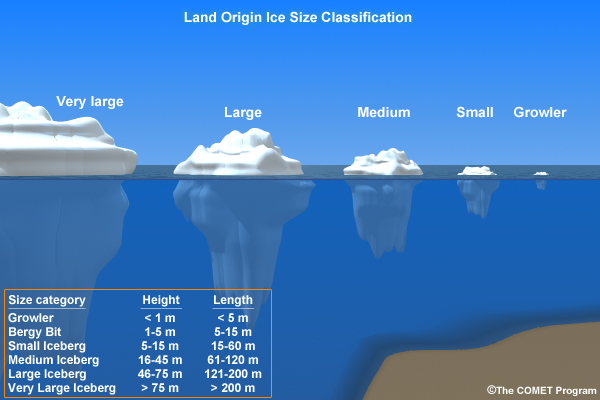Observing Sea Ice

Sea ice is floating ice of either land or sea origin. You can observe the presence of sea ice from a high position on the ship where the entire horizon can be viewed. If sea ice is in view, determine the concentration, coverage, and arrangement of the ice.

You'll also need to document the type of ice, whether it is:
- fast ice, which is attached to the shore
- ice that is grounded in shallow water
- pack ice (free floating)
You should also record the direction, relative to true north, of the major ice edge.

Note the age and development of the ice, defined as one of four main types:
- Newly formed sea ice. This includes frazil ice (fine spicules or plates of ice suspended in water), grease ice (a sludge of icy crystals), slush, shuga (spongy white ice clumps), nilas (a thin elastic crust of ice), and ice rind (a brittle crust of ice).
- Young ice. Young ice can be categorized by its thickness and response to pressure. The first category, gray ice, is 10-15 cm thick and rafts under pressure. The second category, gray-white ice, is 15-30 cm thick and tends to ridge under pressure instead of rafting.
- First-year ice is ice that has not had more than one winter's growth and is 30 or more centimeters thick. It has flat, steep pressure edges.
- Old ice has survived at least one summer's melt and has hammocky, irregular topography. It is stronger than first-year ice.

Ice of land origin includes remnants of ice shelves and glaciers that have calved into the oceans. When land origin ice is present, you should record the number of ice objects visible as well as their types:
- Icebergs - massive pieces of ice with more than five meters visible above sea level
- Bergy bits - large pieces of ice with more than one meter but not more than five meters visible above sea level
- Growlers - small pieces of ice with up to one meter visible above sea level. Growlers are about the size of a truck.